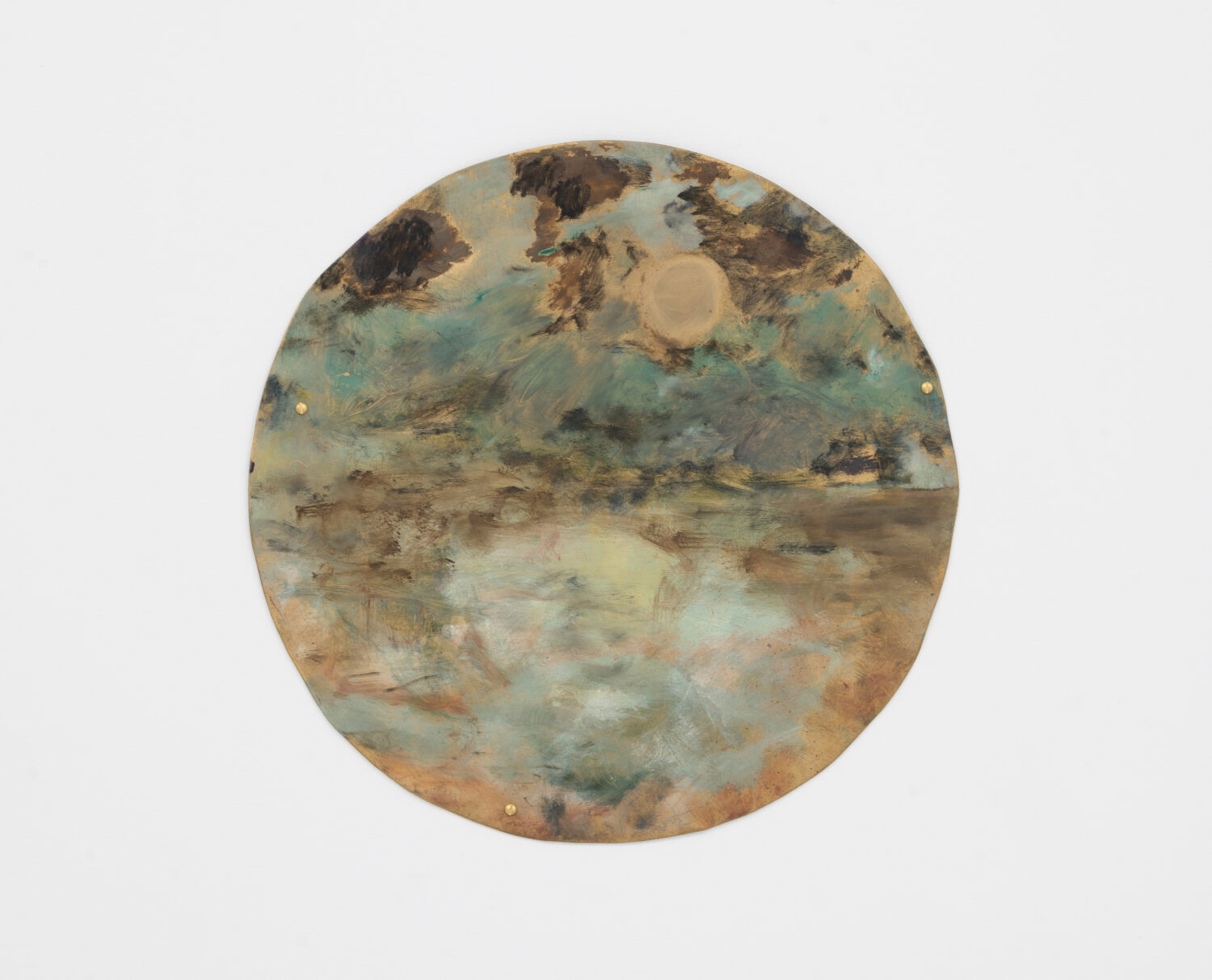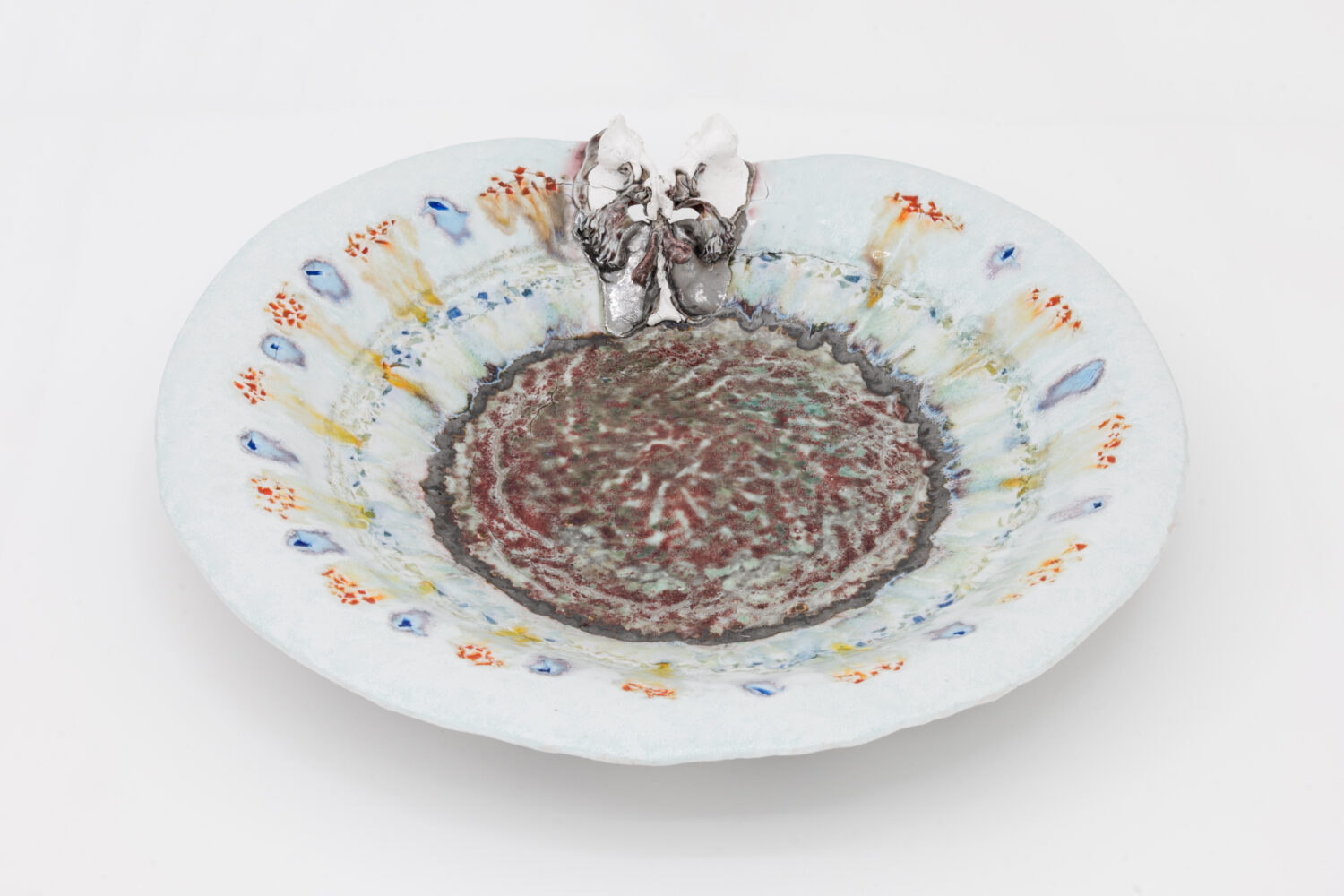


Past
PARIS+ PAR ART BASEL 2022
20 - 23 Oct, 2022. Paris
Fair details:
Paris+ par Art Basel
October 19-23, 2022
Booth E3
Grand Palais Ephemere (Champ de Mars)
2 Place Joffre
75007 Paris
Artists:
Julien Creuzet
Kentaro Kawabata
Hun Kyu Kim
Wangshui
Willa Wasserman
Image:
Kentaro Kawabata
Knot Face, 2022
Porcelain, glass, sand, platinum, silver
60 x 60 x 12 cm
23 5/8 x 23 5/8 x 4 3/4 in
Accounting for drastically shifting notions of the body and the natural world, the exhibition focuses on aesthetics and in particular beauty as a fertile ground for these shifts to manifest. Reconsidering ideas of attraction, artificiality and growth, the presented group of artists look past traditional dichotomies (growth/entropy, natural/artificial) and embrace forms once considered grotesque, artificial and unstable. Cultivating processes of impermanence and metamorphosis, the artists share not only visual cues but also tendencies toward radical material experimentation. From WangShui’s personifications of AI learning to Kentaro Kawabata’s uncannily detailed biomorphic forms, High Art’s exhibition for Paris+ par Art Basel aims to form a topography, however modest, of what appears to be a defining turning point in contemporary aesthetic experience.
Matt Copson‘s (b.1992) work cogently employs theatrical devices and artistic tropes in an effort to approach notions of contemporaneity, abstraction, eternal recurrence, automation and the uncanny. Utilizing examples from ancient philosophy to folklore, Copson re-introduces familiar narratives sometimes partially rendered or in the process of abstraction
Julien Creuzet (b.1986) creates protean artworks incorporating poetry, music, sculpture, assemblage, film and animation. Evoking trans-oceanic postcolonial transactions in relation to multiple temporalities, the artist places his own inherited past, present and future at the heart of his production.
Valerie Keane (b. 1989 in Passaic, USA, lives and works in New York) generates and aggressively deploys ornament, using rhythmically patterned and iterated silhouettes to make blank industrial materials fractalize and vibrate into dense fabrications of the spontaneous and the cosmic. Structures, engineering principles and motifs recombine and redistribute across intricate material translations taking biomorphic, mechanical and living forms.
Hun Kyu Kim (b. 1986) crafts poignant allegorical pictures employing an almost limitless range of historical inquiry. Vast intricate narrative universes laced with intense imagination reflect upon a post-globalized world grabbling with the effects of technological neoliberalism. An ostensibly fantastical world grounded in the realities of the contemporary condition, Kim’s work functions as an anomaly of sorts, that which is simultaneously illustrative and emblematic, detailed and diagnostic, cute and critical.
Perverting from various fields of knowledge (from landscape architecture to marine biology, communication theory and mechanics) Max Hooper Schneider (b.1982) explores the vast contours of nature in an attempt to decentralize human experience. Materials and temporalities are metabolized in his visually generous and carefully displayed accumulations of debris, kinetic machines, plasma lifeforms and self-sustaining habitats.
Through a range of media including sculpture, paintings, installations and films WangShui (B. 1986) considers novel forms of humanism intimated in technological mediations of the body that open subjectivity to metaphysical revision. Their obsession with paradoxes of perception, between detail and distance, transparency and opacity, haptics and optics challenge fixed notions of matter and scale. Adding to the lineage of human/machine depiction, WangShui captures the feeling of dematerialisation into an algorithmic interpolation of being.
MAX 750 characters :
MAX 4000 characters :
In thermodynamics, Entropy measures the quantity of energy not available to use within a working system. This irreversible and unavoidable dissipation of energy — proportional to human’s tendency to overstructure and organize their world — increase exponentially with the escalation of external conditions, such as temperature, pressure or information overload, ultimately tending toward a stable chaos, a sterile randomness depleted of all virtualities. As quantification of disorder, randomness and unpredictability, Entropy is colloquially used as a synonym for the contemporary accelerations of social precarity and over-exploitation of natural resources.
For the first edition of Paris+ par Art Basel, High Art would like to propose a group show by gallery artists Lucy Bull, Max Hooper Schneider, Kentaro Kawabata, Valerie Keane and WangShui. Proposing a visually cohesive presention, the show will highlight novel forms of aesthetics as it relates to evolving perceptions of corporeal existence.
Accounting for drastically shifting notions of the body and the natural world, the proposed exhibition focuses on aesthetics and in particular beauty as a fertile ground for these shifts to manifest. Reconsidering ideas of attraction, artificiality and growth, the proposed group of artists look past traditional dichotomies (growth/entropy, natural/artifical) and embrace forms once considered grotesque, artificial and unstable. Cultivating processes of impermanence and metamorphosis the artists share not only visual cues but also tendencies toward radical material experimentation. From Lucy Bull’s synaesthetic investigations to WangShui’s personifications of AI learning to Kentaro Kawabata’s uncannily detailed biomorphic forms, High Art’s proposed exhibition for Paris+ will aim to form a topography, however modest, of what appears to be a defining turning point in contemporary aesthetic experience.
Disregrading the conception of order, balance as necessary conditions for beauty
Through a range of media including sculpture, paintings, installations and films WangShui (B. 1986) considers novel forms of humanism intimated in technological mediations of the body that open subjectivity to metaphysical revision. Their obsession with paradoxes of perception, between detail and distance, transparency and opacity, haptics and optics challenge fixed notions of matter and scale. Adding to the lineage of human/machine depiction, WangShui captures the feeling of dematerialisation into an algorithmic interpolation of being.
Perverting from various fields of knowledge (from landscape architecture to marine biology, communication theory and mechanics) Max Hooper Schneider (b.1982) explores the vast contours of nature in an attempt to decentralize human experience. Materials and temporalities are metabolized in his visually generous and carefully displayed accumulations of debris, kinetic machines and neon terrariums.
Kentaro Kawabata’s (B.1976) objects are a result of extensive experimentation and knowledge within and around the medium of ceramics. Uncanny biomorphic forms are born through a delicate balance of intricate hand modeling and volatile alchemical processes. The artworks flourish a vibrant organic vitality, evoking nature’s own regenerative processes and endless recompositions of matter.
Valerie Keane (B.1989) generates and aggressively deploys ornament, using rhythmically patterned and iterated silhouettes to make blank industrial materials fractalize and vibrate into dense fabrications of the spontaneous and the cosmic. Structures, engineering principles and motifs recombine and redistribute across intricate material translations taking biomorphic, mechanical and living forms. Keane’s osmotic bodies induce the violent experience of fracture, also implying as its corollary the promise of healing reunion.
As if to simply discard the so called dominant precedent, Lucy Bull’s (b. 1990) idiosyncratic abstract painting finds at its core a wholly feminine physical and psychic reality. Not existing in relation or in opposition to any school per se but rather without obligation to acknowledge that which lacks necessity for the painter. It is as if a more efficient process has been uncovered, a process building toward a certain nature of painting and through this a certain nature of visual stimuli itself. Where perception encounters expression and where process assumes communication, color, light and weight seem to be propelled to form works that are suspended in what can only be described as highly intense polymorphous moments.
Environmental pollution, global warming, increasing wealth disparities, health hazards, uncontrolled globalization and unregulated digitalisation seem to draw the point of earth’s maximum entropy closer and closer.
For the first edition of Paris+ par Art Basel, High Art would like to propose a group show by gallery artists Lucy Bull, Max Hooper Schneider, Kentaro Kawabata, Valerie Keane and WangShui. Bringing together a group of distinctive but at the same time visually cohesive artworks, the presentation will highlight novel approaches to aesthetic paradigms, paying attention to entropy as a positive and propelling force.
Expanding on the notion of creation and destruction as being indivisible, finding forms in impermanence, transformation and metamorphosis and rendering the fluid instabilities of existence and consciousness.





